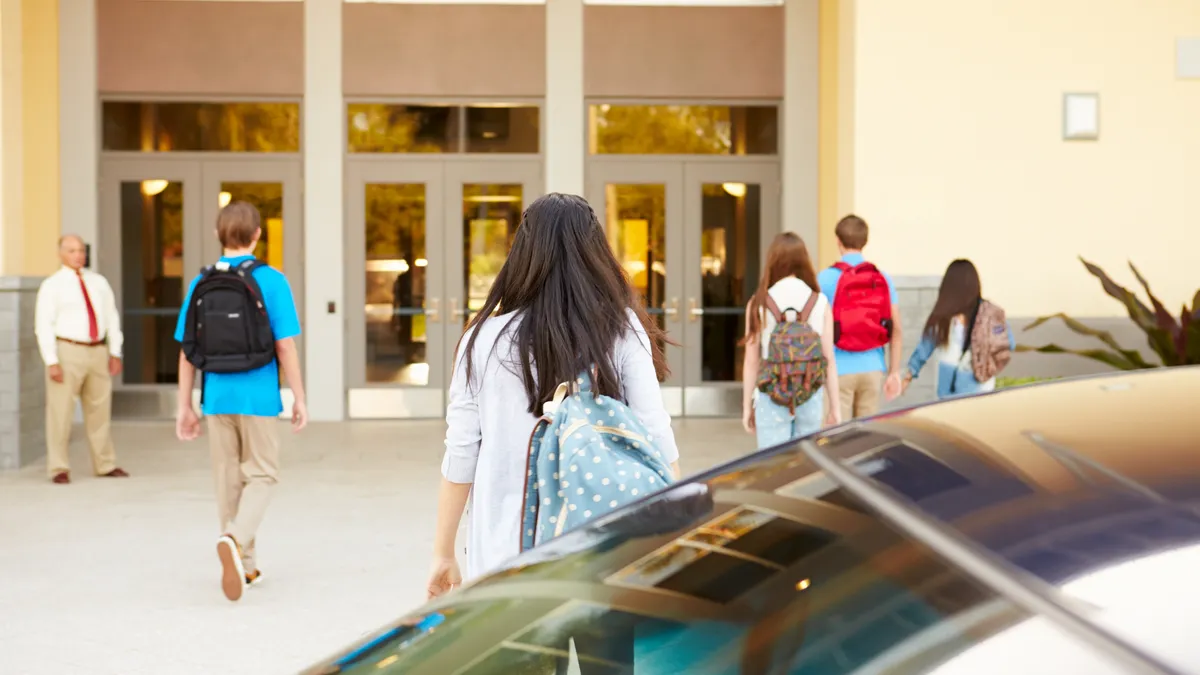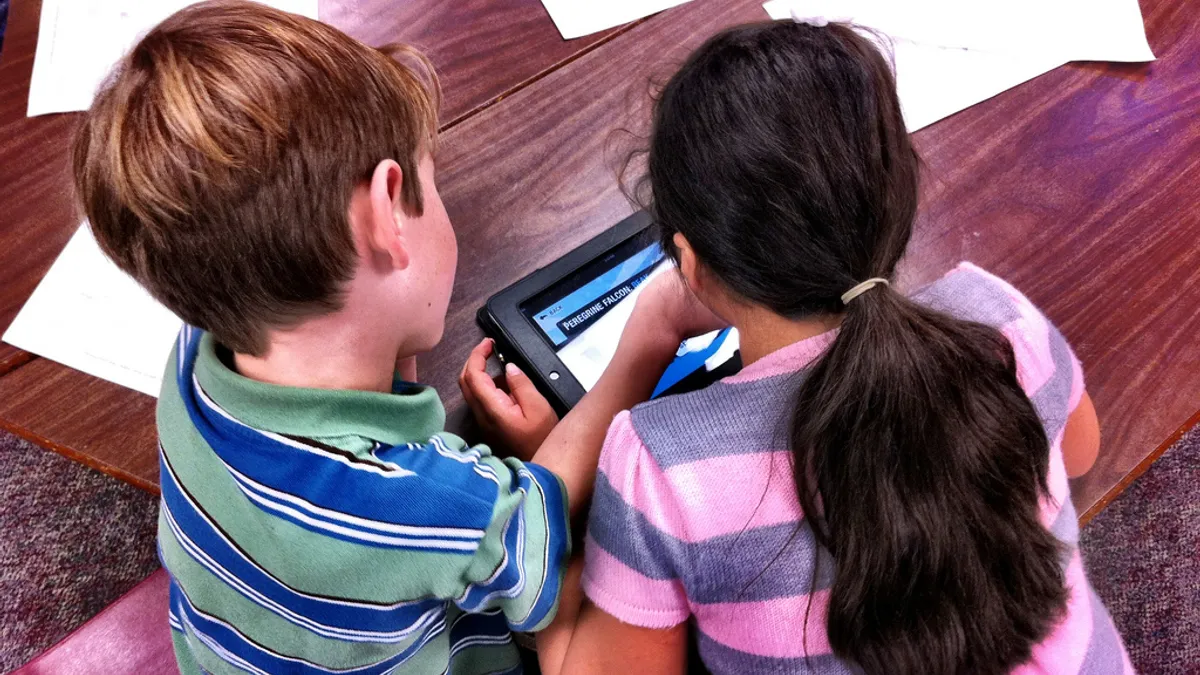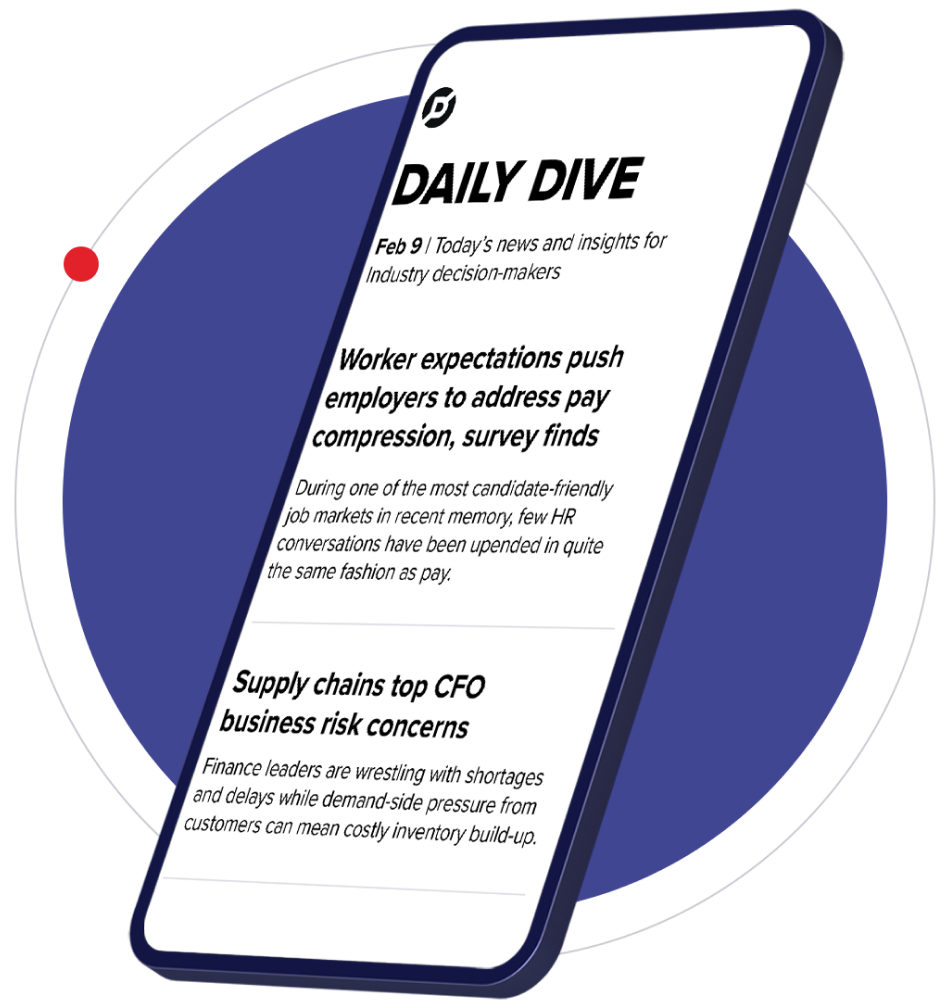Curriculum: Page 56
-
Closing gaps in students' background knowledge levels the playing field
The knowledge gap can occur when educators teach specific skills, such as finding the main idea of a paragraph, but don't give students the background knowledge to practice that skill — such as the actual topic of the text.
By Shawna De La Rosa • April 1, 2019 -
Virtual conferencing expands SEL opportunities through global connections
A Kentucky educator regularly connects her students to a Syrian refugee in Turkey to help them learn firsthand and better grasp cross-cultural hardships.
By Lauren Barack • March 27, 2019 -
 Explore the Trendline➔
Explore the Trendline➔
 Stock Photo via Getty Images
Stock Photo via Getty Images Trendline
TrendlineTop 5 stories from K-12 Dive
K-12 Dive has gathered some a selection of our best coverage from 2025 so far as a one-stop resource on the trends to watch in the months ahead.
By K-12 Dive staff -
Culturally relevant approaches to literature boost engagement, consciousness
A high school English language arts teacher says tying works like "To Kill a Mockingbird" to social justice and race discussions spurs student participation and self-exploration.
By Lauren Barack • March 27, 2019 -
Injecting drones into curriculum requires prep before takeoff
Administrators must weigh a number of safety and legal factors, plus federal regulations, before green-lighting flight-capable devices for the classroom.
By Lauren Barack • March 27, 2019 -
Is a phonics focus the key to unlocking literacy?
A 5th-grade teacher argues that while some students will learn to read regardless, an approach that decodes words with phonics can benefit most.
By Lauren Barack • March 27, 2019 -
3 tech curriculum strategies that boost student opportunities, IT capacity
Schools are feeding students' tech interests with programs offering real-world experience assisting educators and community members.
By Shawna De La Rosa • March 25, 2019 -
Roundup: Curriculum in state education policy
Bible education and diversity are two of the top subjects up for debate in state legislatures. Education Dive has updates on each proposal.
By Jessica Campisi • March 20, 2019 -
Beekeeping offers students hands-on science, business and agriculture experience
Middle and high school science classes that incorporate beekeeping allow students a firsthand look at nature — and at harvesting and selling products like honey and beeswax lip balm.
By Lauren Barack • March 20, 2019 -
How districts can work effectively to weave tech into personalized instruction
Giving both instructional and tech experts seats at the table and promoting collaboration, an ed tech provider executive says, can make for a more engaging, individualized curriculum.
By Lauren Barack • March 20, 2019 -
Planning key to Detroit's success in transitioning 2 curriculums in same year
The implementation of new math and English curriculums is showing early signs of growth, but learning curves remain for students and educators alike.
By Lauren Barack • March 20, 2019 -
Advisory programs reinforce academic, SEL skills
Incorporating sessions into the school day helps students nurture skills they can use when working with college advisors or future managers.
By Lauren Barack • March 20, 2019 -
Connecting native and second language deepens English literacy for ELLs
English language learners need strong primary language skills in order to flourish in learning English. Experts provide best practices.
By Shawna De La Rosa • March 18, 2019 -
Opinion
13 ways educators can transform literacy
Nashville English teacher and Project LIT founder Jarred Amato says avoiding quick fixes, putting students before the "classics," and being willing to ask "What if?" are key strategies to turn the page on reading.
By Jarred Amato • March 18, 2019 -
Virtual, augmented reality platforms emerge as computer science teaching tool
Students who learn to code with mobile AR platforms reportedly score higher on assessments than those who don’t use them, according to a Georgia Institute of Technology study.
By Lauren Barack • March 13, 2019 -
Teaching students to think as they read improves comprehension
A reading specialist suggests that getting students in the habit of pausing to ask themselves questions while reading can help them place material in greater context with other areas of learning.
By Lauren Barack • March 13, 2019 -
Giving lectures in 1,000 words or less leaves more time for deeper learning
By shortening whole-group instruction to around nine minutes, a high school's dean of instruction says students have more time to be creative and collaborative in the classroom.
By Lauren Barack • March 13, 2019 -
When embedding devices in curriculum, focus on active screen time
A secondary school teacher suggests content that engages students in a productive activity rather than encouraging passive consumption is key to effective digital learning.
By Lauren Barack • March 13, 2019 -
Digital fluency begins with tech-savvy teachers
The Consortium for School Networking is introducing a series of new resources to help keep educators up to speed on evolving classroom tech.
By Lauren Barack • March 13, 2019 -
Study: Adopting new textbook doesn't increase students' math achievement
A Harvard University study of over 6,000 schools across six states finds that regardless of which textbook a school used, the average growth in math achievement in 4th and 5th grades was about the same.
By Linda Jacobson • March 11, 2019 -
Q&A
SXSW EDU 2019: For LeVar Burton, promoting literacy 'chose me'
We caught up with the Reading Rainbow host, as well as Reading Is Fundamental CEO Alicia Levi, to discuss the digital divide and increasing access to literacy resources.
By Roger Riddell • March 11, 2019 -
SXSW EDU 2019: How to infuse SEL into core curriculum subjects
Panelists described how making social-emotional skills a constant part of instruction, rather than a separate entity, can give students essential context.
By Roger Riddell • March 8, 2019 -
SXSW EDU 2019: Making school safety more proactive and teaching students to learn from failure
The final full day of Austin's ed innovation gathering also featured a discussion of Reconstruction's lasting impacts and a handful of big announcements.
By Roger Riddell • March 7, 2019 -
Deep Dive
Urban planning projects can foster team building, new worldviews
Teaching this subject has moved from reading textbooks to students designing their own potential spaces — which experts say promotes key life skills.
By Lauren Barack • March 6, 2019 -
Game-based learning's collaborative nature can make SEL a natural fit
A 5th-grade Ohio science teacher found that forming games around test prep lets students embrace agency and teamwork, fostering soft skills and academics.
By Lauren Barack • March 6, 2019 -
4 of 6 science curriculum series 'insufficiently aligned' to national standards
A review by nonprofit EdReports deemed that only one of the series, all designed for grades 6-8, had high usability, coherence and alignment.
By Lauren Barack • March 6, 2019


